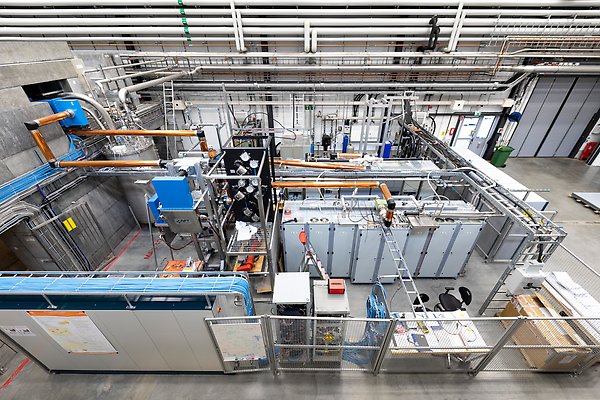Accelerator research and development for particle physics and applied sciences
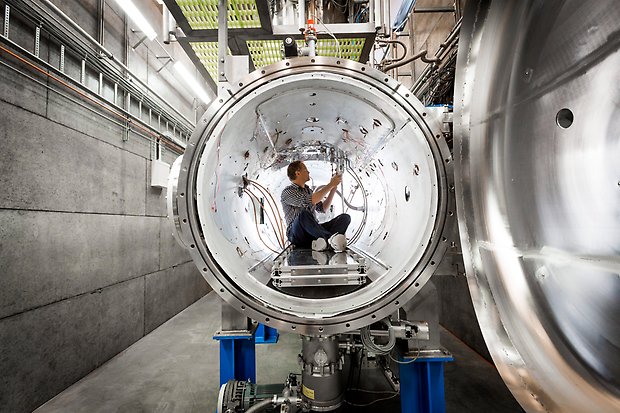
There is wide range of activities at the program for Instrumentation and Accelerators with active accelerator development. Some of them are briefly explained below.
LHC high luminosity upgrade
Key elements of the HL-LHC project at CERN are superconducting magnets and cavities. FREIA is contributing to the development of such equipment.
Work is ongoing in three areas:
- superconducting dipole magnets,
- superconducting crab cavities, and
- cryostats for the superconducting power link.
Contact: Rocio Santiago Kern
Superconducting canted-cosine-theta magnet
In collaboration with Swedish industry, FREIA is developing a superconducting dipole magnet based on a canted-cosine-theta (CCT) layout, sometimes referred to as double-helix or tilted coils. The CCT design is based on two concentric modulated helical coils having a winding shift of π and inverse currents. Advances in the accuracy of 3D machining technology have now made it possible to manufacture this kind of magnet layout by machining an accurate groove in an
aluminium former. Our CCT magnet is a dipole magnet build by the superposition of two oppositely skewed solenoids with respect to the bore axis.
Contact: Maja Olvegård

Vacuum breakdown and high-gradient acceleration
We developed a spectrometer for the measurement of dark and breakdown currents that is being operated at the CLIC high-gradient test stands at CERN. By using tomographic image reconstruction it became possible to obtain the vacuum breakdown location inside an accelerating structure.
Recently, we have constructed a cryogenic, pulsed, high-voltage system integrated in a stand-alone cryocooler to investigate the fundamental mechanisms of field emission and breakdown nucleation. In the system, high-field measurements can be carried out at ambient and down to cryogenic temperatures. The first results reveal a significant increase in the field holding capability of the copper electrodes when cooled and conditioned at cryogenic temperatures, between 30 and 90 K.
Contact: Marek Jacewicz
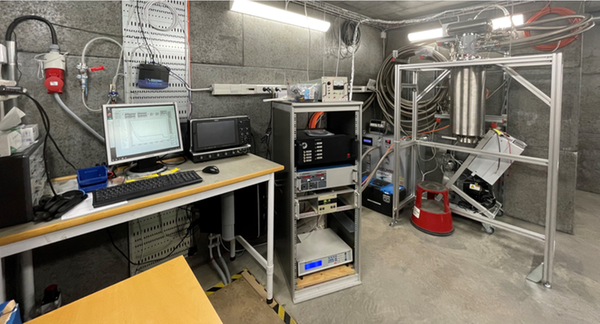
High Efficiency Microwave Amplifiers
The power delivered by microwave is essential for the acceleration of charged particles in most modern particle accelerators. Electromagnetic waves in the range of a hundred MHz to tens of GHz are typically used, hence the names microwave or radio frequency (RF) often used. At the FREIA Laboratory we work typically with frequencies of 352 and 704 MHz (both ESS), 400 MHz (LHC) and 12 GHz (CLIC). The power amplifiers used for the accelerating cavities are the main energy efficiency drivers for linear accelerators. At the FREIA Laboratory we study the energy efficiency optimization of power amplifiers and combiners.
Contact: Dragos Dancila

The ESS neutrino superbeam project
An EU-supported Design Study is carried out of how the proton linear accelerator of the European Spallation Source under construction in Lund, Sweden, can be used to produce the world’s most intense long-baseline neutrino beam, by adding another target at the end of the linac. With a Megaton water Cherenkov detector placed underground in a mine several hundred kilometers away, we hope to find evidence for CP violation discovery in the leptonic sector and, in particular, precision measurement of the CP violating phase.
Contact: Maja Olvegård
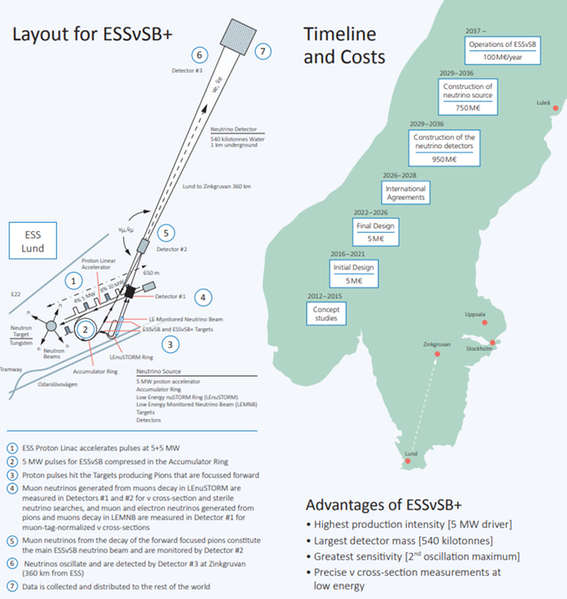
The AWAKE project
The Advanced Proton Driven Plasma Wakefield Acceleration Experiment (AWAKE) is proof-of-principle experiment investigating the use of plasma wakefields driven by a proton bunch to accelerate charged particles. The project, based at CERN and carried out by an international collaboration, is expected to run in different phases until 2030. We are contributing to the studies of the AWAKE electron injectors by designing and evaluating a prototype RF system consisting of a system of klystrons with a solid-state power amplifier to drive them. The definition, development, and build-up of the prototype system (including waveguides, pulse compressors, circulators) to power the RF guns, bunches and accelerating structures are part of this project.
Contact: Dragos Dancila
The FREIA Neutron Instrument
The Fast Reflectometer for Extended Interfacial Analysis (FREIA) to be installed in ESS is a horizontal reflectometer, which will provide unprecedented versatility with its 3 modes of operation: standard geometry, inverted geometry and unique capability of doing kinematic analysis. Its construction pioneers the use of elliptical guides and a fast shutter system, this way scientist will be able to do much faster measurements opening the realm of kinematic studies to the world.
The FREIA Laboratory is contributing to this world-leading instrument with the design of the detector bench, the flight tube and the fast shutter mechanism, operated in vacuum, which ensures that the aperture area is blocked and unblocked with a reaction time of 15 ms.
Contact: Marek Jacewicz
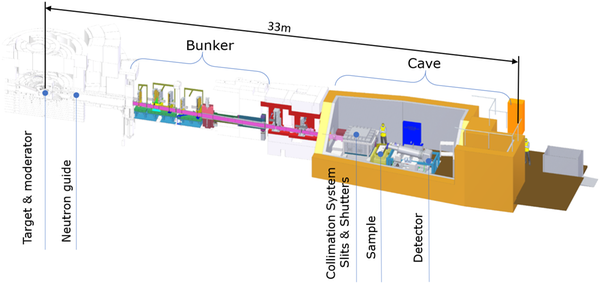
The SAGA Neutron Instrument
A wide consortium has formed to push for a Swedish-led project to design and construct a dedicated surface scattering beamline, a Grazing-Incidence Small-Angle Neutron Scattering (GISANS) instrument, at ESS.
In this project, we develop a technical design for the beamline including dimensions and components. The design of the instrument is directly motivated by the science and business case developed in coordination with the international community and will take full advantage of the brilliance of ESS. The output of the project will be a competitive instrument project proposal for the next ESS call and a detailed plan for the implementation of such an instrument. Particular emphasis will be dedicated to build competence in the development of neutron instrumentation in Sweden to enable strong engagement in the ESS instrument suite.
Contact: Marek Jacewicz
Cavities and Cryomodule Tests for ESS (completed)
FREIA successfully completed the site acceptance tests of the series double-spoke cavity cryomodules for ESS. The measurements include mechanical, vacuum, electric tests and calibration, conditioning outgassing from fundamental power couplers, thermal shield cooling with LN2, liquid helium cooling and pumping down to 31 mbar, tuner tests, RF tests of cavities and heat load estimations.The last test was completed in July 2024.
Our tests revealed unexpected challenges specific to spoke cavities in series cryomodules, such as multipacting and importance of fast interlock even at a very low field, and our experiences will be invaluable feedback to future spoke cavity projects in the SRF community.
